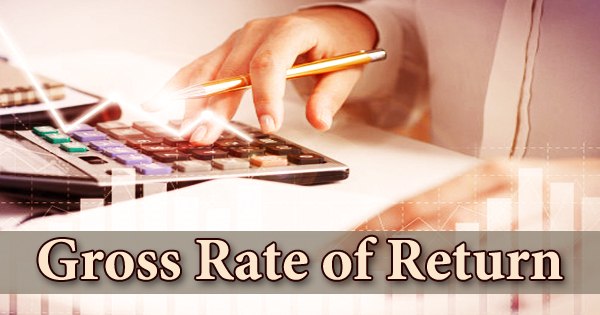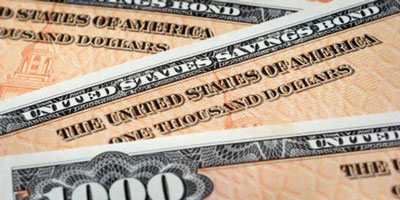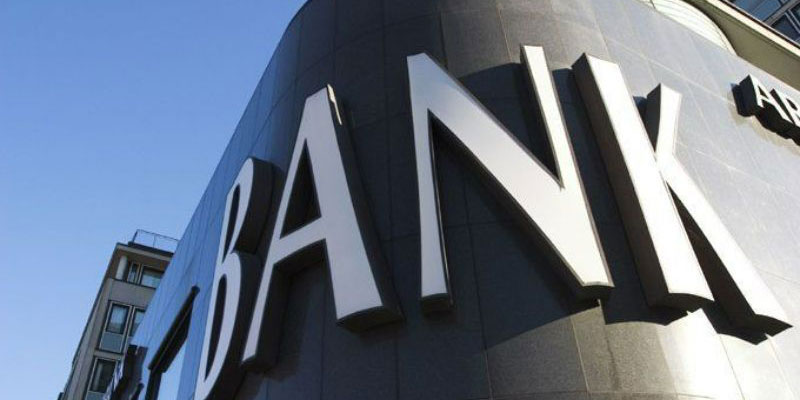You have a "gross rate of return" on your investments if and only if your account for all of your profits before taxes, fees, and commissions. As a measure of an investment's success, you may utilize this indicator. If you want a truer picture of your total results, look at the net rate of return instead of the gross rate of return. One way to evaluate an investment portfolio is to compare the gross rate of return to the net rate of return. Mastering these figures will make you a more astute investor.
Gross Rate of Return: What Is It?
It is common practice to refer to the entire rate of return on an investment as that of the gross rate of return. This interest rate is determined before the application of any charges, such as a service fee or a commission. You may see the gross rate of return for the whole year, each quarter, or each month. Compare this figure to the net rate of return, which takes into account all costs, for a clearer picture of profitability.
Gross Rate of Return: How It Works
It is possible to gauge an investment's success by tracking its gross rate of return. Small fees might mount up and significantly reduce your profits over time, so it's important to know the net rate of return as well. Consider a hypothetical investment of $100,000, yielding an annualized gross rate of return of 8%. After 20 years, your investment would be worth nearly $466 thousand if you didn't pay any fees.

But if you have to pay a fee of 0.5% each year on that investment for 20 years, the math changes dramatically. Your net rate of return would be 7.5%, but your gross rate of return remains the same at 8%. After twenty years, you would only have $424,785. This is a difference of almost $40,000. To get the same after-tax return as a low-cost investment, a high-fee investment would have to yield larger gross returns. The net rate of return is more relevant than the gross rate of return when calculating your projected rate of return on investment. Before opening a brokerage account, be sure you understand the commissions and transaction costs involved.
Types of Gross Return
When choosing a new investment or evaluating performance, investors employ return calculations. Most of the time, determining a net return is more difficult than determining a gross return. This is why the expense ratio is so popular among investors looking to understand the impact of expenditures on the fund's performance. The expense ratio shows the proportion of fund assets spent on expenditures.
It is one of the most often used metrics for evaluating a fund's success alongside the total return and the benchmark return. The Quantified STF Fund, one of the best large-cap funds accessible, offers a fact sheet that illustrates how returns and expenditures should be presented. A gross rate of return is shown for the Quantified STF Fund. There are details on spending as well as a ratio of 1.71%.
Net Return vs. Gross Rate of Return
The term "net return" refers to the amount of profit left after deducting expenses such as fees and commissions, taxes, and inflation. When a country's currency experiences inflation, the value of its currency decreases. Therefore, real return should account for inflation. For instance, if inflation is 2% per year and the investor earns 1% on their investment, the actual return for the year is -1%.
It follows that the net rate of return, after deducting fees and expenditures, might vary widely from the gross rate of return. The difference between the gross and net returns on a mutual fund that has a sales fee of 5.75 percent, for instance, might be substantial.
Rate of Return Example

A financial investment is only one example that may be used to illustrate the rate of return, which can be used to determine the long-term gain or loss from any investment. Say a person invests $1,000 in a mutual fund that seeks to provide exposure to a wide range of markets. At the end of the first year, the investor will evaluate the mutual fund's current worth after deducting the annual operating expenditures and fees. The profit is determined by taking the total amount invested and subtracting the original amount spent. Given that the mutual fund's current value is $1200 and the fees are $3, the net gain would be $17. Its rate of return is 19.97%. We are curious as to the thought process that led to that particular proportion, however. Methods for determining RoR are covered in the next section.
Conclusion
When determining the rate of return of investment, the "gross rate of return" is the first figure that should be taken into consideration. This rate takes into account all profits prior to the elimination of any fees or commissions. However, the net rate of return is more accurate since it factors in all expenses. A lower gross rate of return might be achieved with investments that incur less costs.



